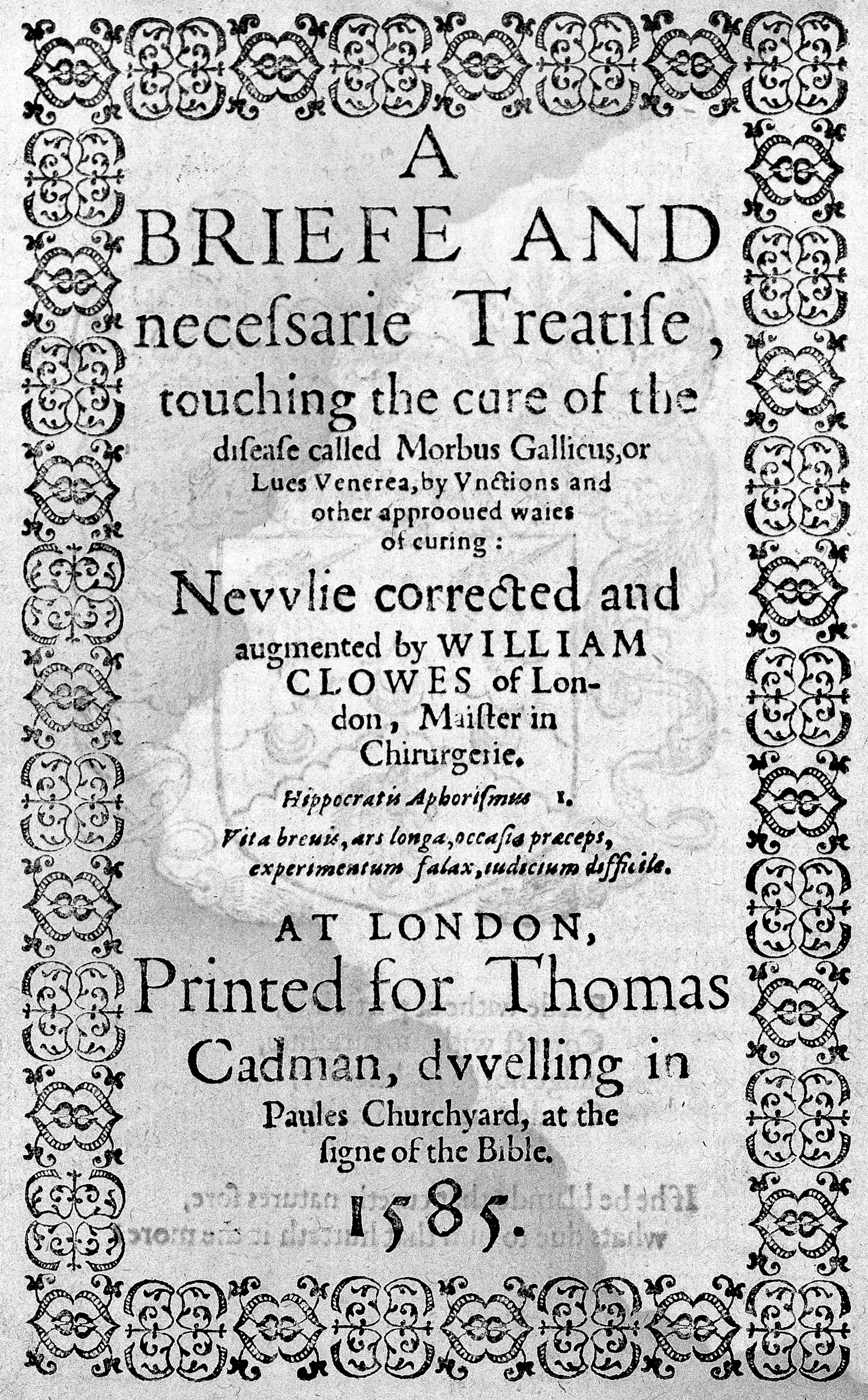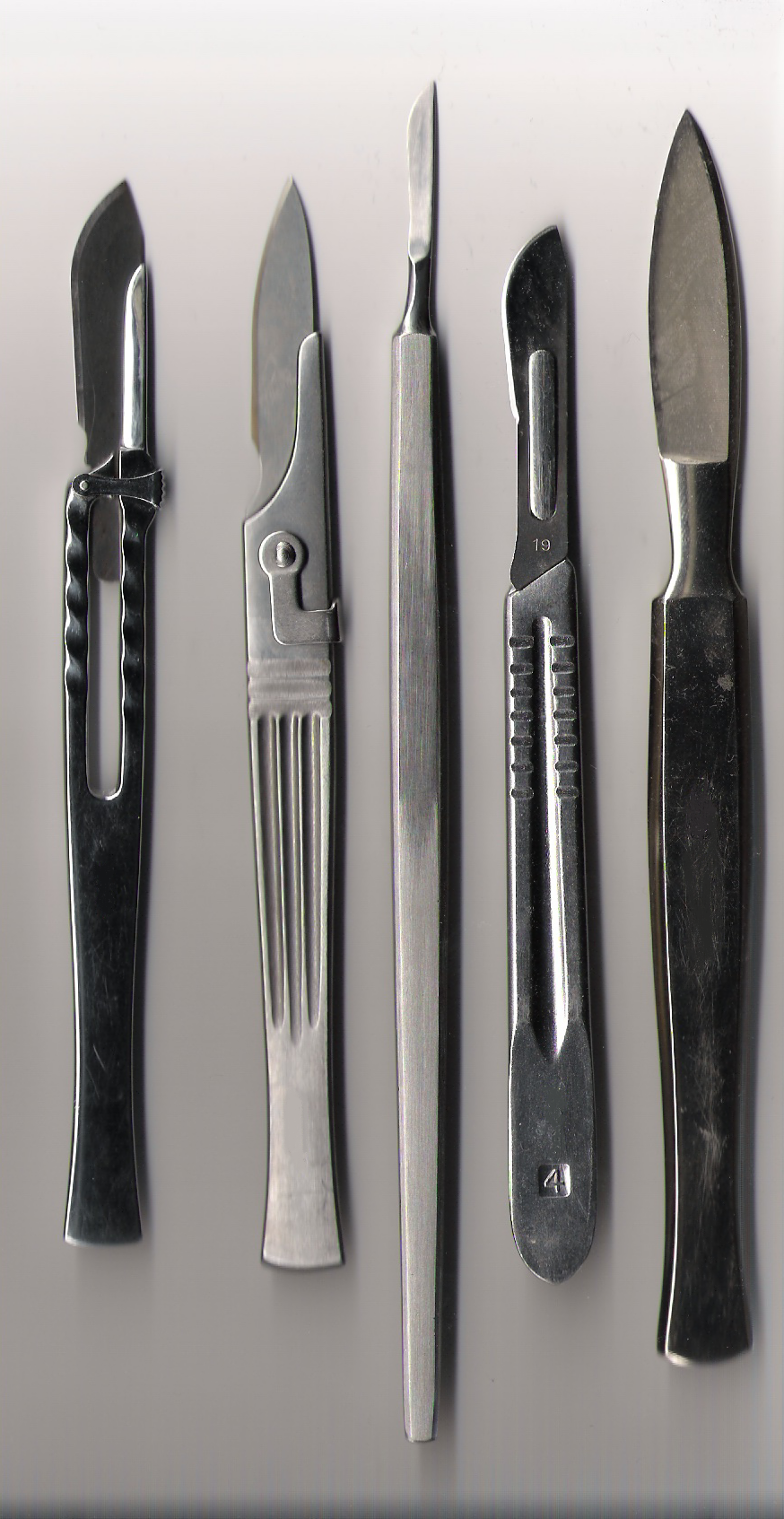|
Catlin (surgery)
A catlin or catling is a long, double-bladed surgical knife. It was commonly used from the 17th to the mid 19th century, particularly for amputations; thereafter its use declined in favor of mechanically driven (and later, electrically driven) oscillating saws. Surgeon William Clowes wrote about the instrument in a medical treatise written in 1596, that amputation required the use of "a very good catlin, and an incision knife," John Kirkup, ''The Evolution of Surgical Instruments: An Illustrated History from Ancient Times to the Twentieth Century'' (Norman Publishing, 2006), 381–382. Later, surgeon John Woodall referred to a "catlinge" in a work in 1639. By 1693, when British navy surgeon John Moyle described proper amputation techniques, he wrote that "with your Catling, divide the Flesh and Vessels about and between the bones, and with the back of your Catling, remove the Periosteum that it may not hinder the saw, nor cause greater Torment in the Operation,". The term was t ... [...More Info...] [...Related Items...] OR: [Wikipedia] [Google] [Baidu] |
Catlin
Catlin may refer to: People with the surname *Albertus W. Catlin (1868–1933), US Marine Corps Brigadier General & Medal of Honor recipient *Charles L. Catlin (1842-1901), American lawyer and politician *David Catlin (born 1952), American mathematician *George Catlin (1796–1872), American painter *George Catlin (political scientist) (1896–1979), English academic and politician *John Catlin (politician) (1803–1874), acting governor of the Wisconsin Territory *Karen Catlin (born 1963), American technology executive and advocate *Kelly Catlin (1995–2019), American racing cyclist *Mark Catlin, Jr. (1910-1986), American politician, lawyer *Mark Catlin, Sr. (1882–1956) American football coach, politician, lawyer *Nathaniel Catelyn (c.1589-1637), politician and judge in Ireland *Sir Nevill Catlin (1634-1702), English landowner and politician *Nicholas Catlin (born 1989), English hockey player *Norman Catlin (1918–1941), English footballer *Paul Catlin (1948-1995), American math ... [...More Info...] [...Related Items...] OR: [Wikipedia] [Google] [Baidu] |
Surgery
Surgery ''cheirourgikē'' (composed of χείρ, "hand", and ἔργον, "work"), via la, chirurgiae, meaning "hand work". is a medical specialty that uses operative manual and instrumental techniques on a person to investigate or treat a pathological condition such as a disease or injury, to help improve bodily function, appearance, or to repair unwanted ruptured areas. The act of performing surgery may be called a surgical procedure, operation, or simply "surgery". In this context, the verb "operate" means to perform surgery. The adjective surgical means pertaining to surgery; e.g. surgical instruments or surgical nurse. The person or subject on which the surgery is performed can be a person or an animal. A surgeon is a person who practices surgery and a surgeon's assistant is a person who practices surgical assistance. A surgical team is made up of the surgeon, the surgeon's assistant, an anaesthetist, a circulating nurse and a surgical technologist. Surgery usually spa ... [...More Info...] [...Related Items...] OR: [Wikipedia] [Google] [Baidu] |
Knife
A knife ( : knives; from Old Norse 'knife, dirk') is a tool or weapon with a cutting edge or blade, usually attached to a handle or hilt. One of the earliest tools used by humanity, knives appeared at least 2.5 million years ago, as evidenced by the Oldowan tools. Originally made of wood, bone, and stone (such as flint and obsidian), over the centuries, in step with improvements in both metallurgy and manufacturing, knife blades have been made from copper, bronze, iron, steel, ceramic, and titanium. Most modern knives have either fixed or folding blades; blade patterns and styles vary by maker and country of origin. Knives can serve various purposes. Hunters use a hunting knife, soldiers use the combat knife, scouts, campers, and hikers carry a pocket knife; there are kitchen knives for preparing foods (the chef's knife, the paring knife, bread knife, cleaver), table knives (butter knives and steak knives), weapons (daggers or switchblades), knives for throwing or juggling, a ... [...More Info...] [...Related Items...] OR: [Wikipedia] [Google] [Baidu] |
Amputation
Amputation is the removal of a limb by trauma, medical illness, or surgery. As a surgical measure, it is used to control pain or a disease process in the affected limb, such as malignancy or gangrene. In some cases, it is carried out on individuals as a preventive surgery for such problems. A special case is that of congenital amputation, a congenital disorder, where fetal limbs have been cut off by constrictive bands. In some countries, amputation is currently used to punish people who commit crimes. Amputation has also been used as a tactic in war and acts of terrorism; it may also occur as a war injury. In some cultures and religions, minor amputations or mutilations are considered a ritual accomplishment. When done by a person, the person executing the amputation is an amputator. The oldest evidence of this practice comes from a skeleton found buried in Liang Tebo cave, East Kalimantan, Indonesian Borneo dating back to at least 31,000 years ago, where it was done when ... [...More Info...] [...Related Items...] OR: [Wikipedia] [Google] [Baidu] |
William Clowes (surgeon)
William Clowes the Elder ( – 1604) was an early English surgeon. He published case reports in which he advocated the application of powders and ointments. He also published one of the first reports in English on how to reduce a femur. Life William Clowes was the son of Thomas and grandson of Nicholas Clowes, both of Kingsbury, Warwickshire. He learned surgery as apprentice of George Keble, a London surgeon, but not a member of the Barber-Surgeons' Company. Clowes began practice in 1563 as a surgeon in the army commanded by Ambrose Dudley, 3rd Earl of Warwick, in France, and on this expedition began his lifelong friendship with John Banester. After the Le Havre expedition Clowes served for several years in the navy and then about 1569 settled in London. On 8 November in that year he was admitted by translation into the Barber-Surgeons' Company. He was successful in practice, with occasional disappointments, as when a man complained in 1573 that the cure of his wife was a ... [...More Info...] [...Related Items...] OR: [Wikipedia] [Google] [Baidu] |
John Woodall
John Woodall (1570–1643) was an English military surgeon, Paracelsian chemist, businessman, linguist and diplomat. He made a fortune through the stocking of medical chests for the East India Company and later the armed forces of England. He is remembered for his authorship of ''The Surgeon's Mate'' which was the standard text to advise ships surgeons on medical treatments while at sea and contains an advanced view on the treatment of scurvy. Life Woodall was the son of Richard Woodall of Warwick, and was apprenticed around the age of 16 or 17 to a London barber surgeon. He did not finish his apprenticeship but gained experience from the age of nineteen in 1589 as a surgeon with Lord Willoughby's regiment on its expedition to support the Protestant Henry IV of France and King of Navarre in his campaign against the Catholic League of Normandy. He returned in 1590. Woodall is known to have then lived and worked as a surgeon in Polonia and Stade, a Hanseatic port near Ha ... [...More Info...] [...Related Items...] OR: [Wikipedia] [Google] [Baidu] |
Instruments Used In General Surgery
There are many different surgical specialties, some of which require very specific kinds of surgical instruments to perform. General surgery is a specialty focused on the abdominal contents, as well as the thyroid gland, and diseases involving skin, breasts, various soft tissues, trauma, peripheral vascular disease, hernias, and endoscopic procedures. This page is dedicated specifically to listing surgical instruments used in general surgery. Instruments can be classified in many ways - but broadly speaking, there are five kinds of instruments. # Cutting and dissecting instruments: #*Scalpels, scissors, and saws are the most traditional #*Elevators can be both cutting and lifting/retracting #*Although the term dissection is broad, energy devices such as diathermy/cautery are often used as more modern alternatives. # Grasping or holding instruments: #*Classically this included forceps and clamps predominantly #*Roughly, forceps can be divided into traumatic (tissue crushin ... [...More Info...] [...Related Items...] OR: [Wikipedia] [Google] [Baidu] |
Surgical Instruments
A surgical instrument is a tool or device for performing specific actions or carrying out desired effects during a surgery or operation, such as modifying biological tissue, or to provide access for viewing it. Over time, many different kinds of surgical instruments and tools have been invented. Some surgical instruments are designed for general use in all sorts of surgeries, while others are designed for only certain specialties or specific procedures. Classification of surgical instruments helps surgeons to understand the functions and purposes of the instruments. With the goal of optimizing surgical results and performing more difficult operations, more instruments continue to be invented in the modern era. History Many different kinds of surgical instruments and tools have been invented and some have been repurposed as medical knowledge and surgical practices have developed. As surgery practice diversified, some tools are advanced for higher accuracy and stability while so ... [...More Info...] [...Related Items...] OR: [Wikipedia] [Google] [Baidu] |
.jpg)




